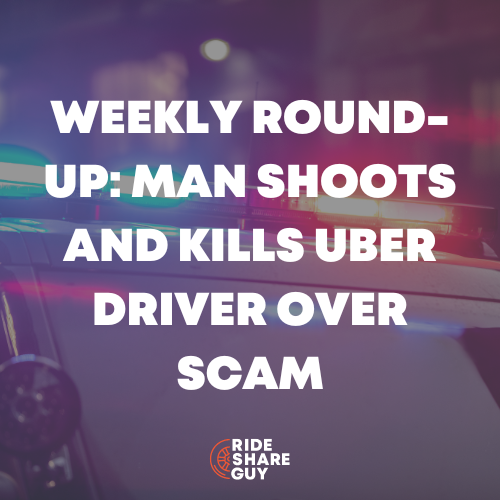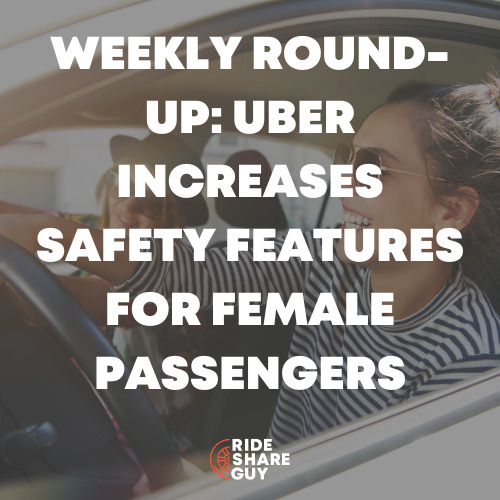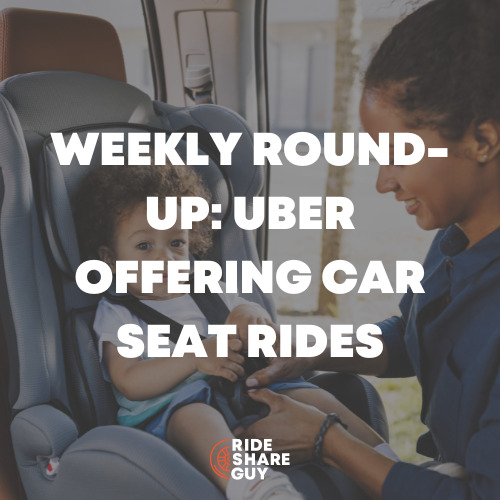Recently, Lyft released its much-delayed, first ever safety report. In the report, Lyft disclosed it received over 4,000 reports of assault over a three-year period on its platform, with 38% of drivers reporting being assaulted. Obviously 4,000 sounds like a lot on the surface but let’s dig into that number and learn more. Senior RSG Paula Gibbins shares more facts from the report and driver feedback below.
The Lyft safety study covered reports on the platform in the U.S. from January 1, 2017 through December 31, 2019, focusing on motor vehicle fatalities, fatal physical assaults and five subcategories of sexual assault. You can read the full report here, but we’ll be going through some of the major points throughout this article.
Within the report, John Zimmer, Co-Founder and President of Lyft stated, “Safety is fundamental to Lyft. That means creating features and policies to give riders and drivers peace of mind, and being clear about what happens on our platform. Our report is just that: a look at where our company has been and where we’re heading, in order to help everyone have a safe ride from beginning to end.”
Lyft has added safety features recently to the app that are accessible to both drivers and passengers alike. This includes an emergency help button that’s supported by ADT as well as a critical response line that’s available 24/7.
According to the report, if a safety incident is reported, “As a first step, Specialists freeze the account of the alleged offender – either the rider or driver – as well as the accounts of others involved while we investigate internally.”
Next, they gather information from the reporting party and contact others who may have been involved or have information regarding the incident. From there, they evaluate the situation and determine the best course of action to support the reporting party.
The Lyft Safety Team also works with law enforcement as appropriate. The report also states, “Generally speaking, individuals who are accused of committing the types of incidents detailed in this report will be permanently removed from the Lyft community, preventing them from riding or driving in the future.”
Stats From the Study
Below are stats taken directly from the study to show how frequently each event took place. The data provided for the motor vehicle fatalities for the U.S. as a whole was provided by the National Highway Traffic Safety Administration (NHTSA). According to the report, “Lyft calculated the rate of fatalities per 100 million Vehicle Miles Traveled (VMT).”
Overall, the number of reported fatalities was lower than the national average of motor vehicle accidents for the same time period. But, of course, Lyft drivers only make up a relatively small percentage of total drivers within the U.S., so it’s not a straight comparison. Another possible point of contention is that the Lyft fatalities are likely included in the national average totals.
Overall, it appears that the number of reported incidents are relatively low compared to the percentage of trips taken each year. However, as Lyft states, “even one of these incidents is too many.” The ‘denominator’ in this equation does make a big difference though and it seems like some mainstream media outlets buried this or failed to even include it at all.
Obviously if it’s 4,000 divided by 4,000,000 that is not a good stat. But if it’s 4,000 divided by 4,000,000,000 (.0001%) the overall risk profile is different. The important things to look at are the overall percentage and what the companies are doing to add safety features, combat this type of behavior and what type of support they provide to riders/drivers in question.
Steps Toward Safety
Lyft has a long list of safety features and measures that are already in place to help ensure driver and passenger safety.
Examples include, but are not limited to, background checks on drivers, community safety education, verifying the ride via vehicle information, cross street pick-up and drop-off locations for anonymity, ability to share current location information, emergency help at the press of a button and more.
Editor’s note: We’ve updated information below concerning Lyft’s practice of verifying rider IDs. It was misstated previously that Lyft did not have a practice in place for verifying rider IDs.
One thing that both Lyft and Uber are testing is verifying rider ID in certain circumstances. Riders who use anonymous methods of payments, such as prepaid cards, giftcards, Venmo or PayPal, are required to provide additional identification before riding with Lyft.
For now, this is only in select markets and under those type of situations. If this was added for all rides, it would add a layer of security and it’s feasible since both companies already make their scooter and ebike riders verify their ID to have access to those products.
They could also do a lot more to encourage the use of dash cams for drivers. Dash cams are a great ‘insurance policy’ to prevent anything from ever happening in the first place. Even better, if you can find one like DisplayRide that uploads video to the cloud in real time, you’ll be in good hands.
Harry is such a fan of this company, he actually came on as an advisor to them. DisplayRide provides drivers with a dash cam that will automatically record your rideshare rides, recording audio (optional) and video at all times, day and night.
The video is then wirelessly uploaded and stored, ready for you to access at any time if you need it. They even boast that they can share the video proof directly with the platform in question to help support your case if falsely accused.
As mentioned, this safety study was delayed, and is Lyft’s first ever report. Rideshare companies tend to be more reactive than proactive, as drivers have complained about safety issues for a long time.
What about when drivers report things that go wrong, yet deal with an ineffective customer service rep? Again, this is yet another issue drivers have complained about. Frankly, I wouldn’t be surprised if this wasn’t the full number of issues reported by drivers given rideshare’s notoriously unhelpful “customer service.”
On the other hand, the media has a tendency to sensationalize (gotta get those clicks!) and the media was overly harsh on Lyft – no wonder they took so long to release this data!
As Harry comments, “at a certain level, we should applaud the companies for releasing this data, since we know there will be some bad headlines, but it’s the right thing to do.”
How Can a Dash Cam Help?
While ideally the burden for “not getting assaulted while driving” would be on would-be perpetrators, you never really know when someone could snap. That quiet, sleepy drunk in the back seat could suddenly wake up and be very angry about being in your car!
One thing we’ve always recommended (and most drivers say is a “must have”)? A dash camera! You can check out our list of best dash cams for Uber and Lyft drivers, but what are some important features to have in a dash cam if you’re not sure which one to get?
We chatted with Abdul Kasim of DisplayRide, and he said some important characteristics of a good dash camera include both inside and outside recordings simultaneously, day and night. This includes video and, where allowed, audio.
In addition, you’ll want to make sure the video is saved automatically to the cloud, so you can pull it whenever you need. DisplayRide offers all of that and more, but no matter what camera you go with, it’s crucial to have something that can record what’s going on in the event of an incident.
What are Drivers Saying About the Study?
We reached out on social media about the news of this study to see what drivers really think of Lyft, their safety features and this report.
One statement on YouTube that stood out to me was:
“Stop allowing rides by people not verified. Nothing worse than expecting one rider and getting another.
You don’t know if it’s just a big favor or you are getting set up by someone who stole a phone and you are next on the hit parade. At least make the app named account owner list their friends name and then Lyft and Uber can run a quick background check.”
Under the “verify” feature listed out by Lyft, it doesn’t really specify if/when/how passengers are verified before joining the app.
Drivers must undergo a background check and the passenger has the driver’s vehicle information to ensure they are getting into the correct vehicle, but there’s nothing turned on its head to protect drivers in the same fashion.
There’s always more to do and always more than can be done to help ensure the safety of everyone involved. I hope Lyft uses this information and feedback to continue evolving their safety practices.
Drivers, what stood out to you about the Lyft assaults study?
-Paula @ RSG




